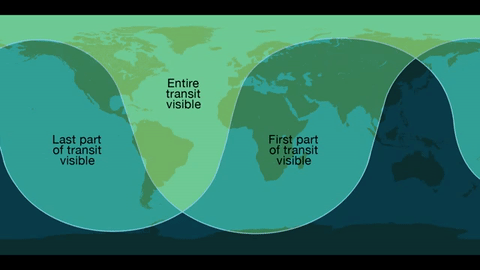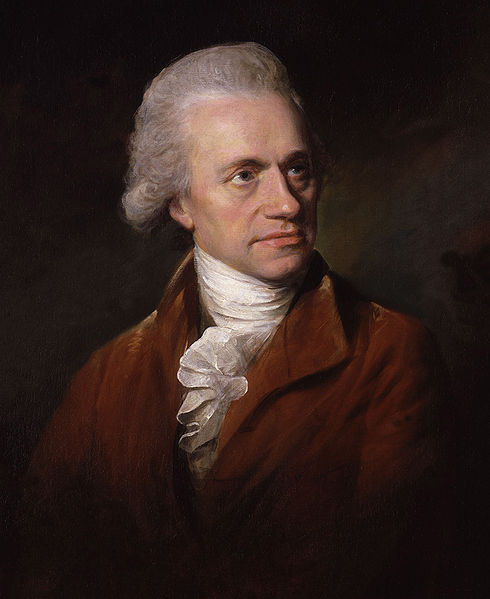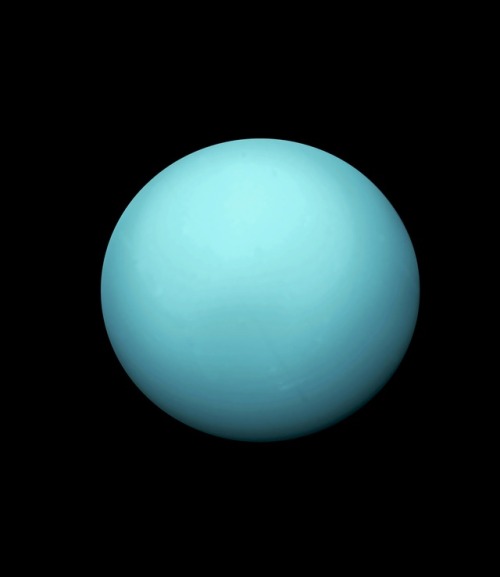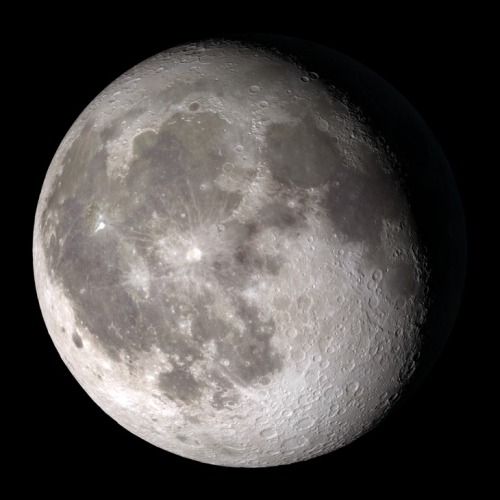Mercury In The Spotlight
Mercury In the Spotlight
For more than seven hours on Monday, May 9, Mercury will be visible as a tiny black dot crossing the face of the sun. This rare event – which happens only slightly more than once a decade – is called a transit.

Although Mercury whips around the sun every 88 days – over four times faster than Earth – the three bodies rarely align. Because Mercury orbits in a plane 7 degrees tilted from Earth’s orbit, it usually darts above or below our line of sight to the sun. As a result, a Mercury transit happens only about 13 times a century. The last one was in 2006, and the next one isn’t until 2019.

When: On May 9, shortly after 7:00 a.m. EDT, Mercury will appear as a tiny black dot against a blazing backdrop, traversing the sun’s disk over seven and a half hours. Mercury will cross the edge of the sun (ingress) after 7:00 a.m. EDT. The mid-transit point will occur a little after 10:45 a.m. EDT, with egress around 2:30 p.m. EDT.

Where: Skywatchers in Western Europe, South America and eastern North America will be able to see the entirety of the transit. The entire 7.5-hour path across the sun will be visible across the Eastern U.S. – with magnification and proper solar filters – while those in the West can observe the transit in progress at sunrise.

Safety!
Unlike the 2012 Venus transit of the sun, Mercury is too small to be visible without magnification from a telescope or high-powered binoculars. Both must have safe solar filters made of specially-coated glass or Mylar; you can never look directly at the sun. We’re offering several avenues for the public to view the event without specialized and costly equipment, including images on NASA.gov, a one-hour NASA Television special, and social media coverage.

The Science…Why are Planetary Transits Important?
Transits like this allowed scientists in the 17th century to make the first estimates of Earth’s distance from the sun. Transit observations over the past few centuries have also helped scientists study everything from the atmosphere of Venus to the slight shifts in Mercury’s orbit that could only be explained by the theory of general relativity. Because we know Mercury’s size and location precisely, this transit will help scientists calibrate telescopes on solar observatories SDO, SOHO, and Hinode.

Transits can also teach us more about planets – both in and out of our solar system. The Venus transit in 2012 provided observations of the planet’s atmosphere. Transits are also the main way we find planets outside the solar system, called exoplanets.

The transit method looks for a drop in the brightness of a star when a planet passes in front of it. This method will not find every planet – only those that happen to cross our line of sight from Earth to the star. But with enough sensitivity, the transit method through continuous monitoring is a great way to detect small, Earth-size planets, and has the advantage of giving us both the planet’s size (from the fraction of starlight blocked), as well as its orbit (from the period between transits). Our Kepler/K2 mission uses this method to find exoplanets, as will the Transiting Exoplanet Survey Satellites, or TESS, following its launch in 2017/2018.
We will stream a live program on NASA TV and the agency’s Facebook page from 10:30 to 11:30 a.m. – an informal roundtable during which experts representing planetary, heliophysics and astrophysics will discuss the science behind the Mercury transit. Viewers can ask questions via Facebook and Twitter using #AskNASA.
Make sure to follow us on Tumblr for your regular dose of space: http://nasa.tumblr.com
More Posts from Carlosalberthreis and Others

Feliz Natal! ⛪🎄
Que possamos seguir o exemplo da família de Jesus. Pois eles seguiram firmes diante das dificuldades da vida. 💚❤️
Feliz Natal! 🤩⛪✝️

A Origem das FRBs - Fast Radio Bursts - Space Today TV Ep.1070
Talvez um dos maiores mistérios da astronomia possa estar perto de ser solucionado.
Quem lembra do meu vídeo de retrospectiva de 2017 deve lembrar que eu falei que o ano de 2017 foi um ano interessante para um fenômeno conhecido como FRBs, ou Fast Radio Bursts.
Esses fenômenos são explosões rápidas que acontecem no comprimento de onda de ondas de rádio, são fenômenos raros de serem observados e muito intrigantes.
Chegou-se até a pensar que poderiam ser sinais emitidos por civilizações extra-terrestres.
Um desses fenômenos é especial, e é conhecido como FRB121102.
É um evento de FRB que se repete, mais de 200 explosões de alta energia foram registradas desse único evento.
Em 2017 os pesquisadores conseguiram publicar qual é a origem desse evento, uma região de formação de estrelas numa galáxia anã, localizada a cerca de 3 bilhões de anos-luz de distância da Terra.
Embora a localização tenha sido descoberta, o mistério ainda residia sobre a origem.
O que causa um evento desses?
Um grupo de pesquisadores resolveu então estudar os sinais recebidos desse evento de FRB e descobriram algo interessante, que essa explosão tinha uma propriedade conhecida como polarização.
E esse efeito de polarização permitiu que os astrônomos estudassem o ambiente da fonte que gerou essa FRB.
O ambiente da FRB 121102 possui um campo magnético intenso em um plasma de grande densidade.
Isso foi possível descobrir pois a polarização sofreu uma perturbação muito intensa, perturbação essa que é causada pela presença de um campo magnético muito forte.
Sabendo também que a duração das explosões dessa FRB varia de 30 microssegundos a 9 milissegundos, os astrônomos integraram essas informações e chegaram à seguinte conclusão.
A fonte é pequena, com cerca de 10 km de diâmetro, mas que é extremamente densa e que gera um campo magnético intenso.
Isso se encaixa muito bem em estrelas de nêutrons.
Ou uma magentar interagindo com a nebulosa de material expelido pela estrela original.
Ou até mesmo um pulsar.
O mecanismo exato não é conhecido ainda, mas uma coisa é certa, o ambiente onde a FRB foi gerada é único e pode indicar um novo tipo de objeto ou uma nova interação entre dois objetos densos e altamente magnetizados.
Assim, um dos grandes mistérios da astronomia está aos poucos sendo completamente entendido o que é muito importante para entendermos o funcionamento do universo.

❝Sou o povo a triunfar
Sou a força popular
Sou raiz, tradição e saber
A festa do meu boi bumbá❞


William Herschel
Frederick William Herschel, was a British astronomer and composer of German origin, and brother of fellow astronomer Caroline Herschel, with whom he worked. Born in the Electorate of Hanover, Herschel followed his father into the Military Band of Hanover, before migrating to Great Britain in 1757 at the age of nineteen.
Herschel constructed his first large telescope in 1774, after which he spent nine years carrying out sky surveys to investigate double stars. The resolving power of the Herschel telescopes revealed that the nebulae in the Messier catalogue were clusters of stars. Herschel published catalogues of nebulae in 1802 (2,500 objects) and in 1820 (5,000 objects). In the course of an observation on 13 March 1781, he realized that one celestial body he had observed was not a star, but a planet, Uranus.

This was the first planet to be discovered since antiquity and Herschel became famous overnight. As a result of this discovery, George III appointed him Court Astronomer. He was elected as a Fellow of the Royal Society and grants were provided for the construction of new telescopes.
Herschel pioneered the use of astronomical spectrophotometry as a diagnostic tool, using prisms and temperature measuring equipment to measure the wavelength distribution of stellar spectra. Other work included an improved determination of the rotation period of Mars, the discovery that the Martian polar caps vary seasonally, the discovery of Titania and Oberon (moons of Uranus) and Enceladus and Mimas (moons of Saturn). In addition, Herschel discovered infrared radiation. Herschel was made a Knight of the Royal Guelphic Order in 1816. He was the first President of the Royal Astronomical Society when it was founded in 1820. He died in August 1822, and his work was continued by his only son, John Herschel.
Animation taken from the video ‘‘The Discovery of Uranus’’
To know more about the history of William Herschel, click here.
Juno Spacecraft: What Do We Hope to Learn?

The Juno spacecraft has been traveling toward its destination since its launch in 2011, and is set to insert Jupiter’s orbit on July 4. Jupiter is by far the largest planet in the solar system. Humans have been studying it for hundreds of years, yet still many basic questions about the gas world remain.

The primary goal of the Juno spacecraft is to reveal the story of the formation and evolution of the planet Jupiter. Understanding the origin and evolution of Jupiter can provide the knowledge needed to help us understand the origin of our solar system and planetary systems around other stars.

Have We Visited Jupiter Before? Yes! In 1995, our Galileo mission (artist illustration above) made the voyage to Jupiter. One of its jobs was to drop a probe into Jupiter’s atmosphere. The data showed us that the composition was different than scientists thought, indicating that our theories of planetary formation were wrong.
What’s Different About This Visit? The Juno spacecraft will, for the first time, see below Jupiter’s dense clover of clouds. [Bonus Fact: This is why the mission was named after the Roman goddess, who was Jupiter’s wife, and who could also see through the clouds.]

Unlocking Jupiter’s Secrets
Specifically, Juno will…
Determine how much water is in Jupiter’s atmosphere, which helps determine which planet formation theory is correct (or if new theories are needed)
Look deep into Jupiter’s atmosphere to measure composition, temperature, cloud motions and other properties
Map Jupiter’s magnetic and gravity fields, revealing the planet’s deep structure
Explore and study Jupiter’s magnetosphere near the planet’s poles, especially the auroras – Jupiter’s northern and southern lights – providing new insights about how the planet’s enormous
Juno will let us take a giant step forward in our understanding of how giant planets form and the role these titans played in putting together the rest of the solar system.
For updates on the Juno mission, follow the spacecraft on Facebook, Twitter, YouTube and Tumblr.
Make sure to follow us on Tumblr for your regular dose of space: http://nasa.tumblr.com
#Eclipse2017
Solar System: Things to Know the August Eclipse
We’re counting down until the August 21 total solar eclipse that will be visible across most of North America. Here are some things you can do to prepare.

1. Find A Spot
The eclipse should be visible to some extent across the continental U.S. Here’s map of its path.
Our eclipse page can help you find the best viewing locations by longitude and latitude: eclipse.gsfc.nasa.gov/SEgoogle/SEgoogle2001/SE2017Aug21Tgoogle.html
2. Citizen Science
Want to know more about citizen science projects? Find a list of citizen science projects for the eclipse: https://eclipse.aas.org/resources/citizen-science

3. Never look directly at the sun! Even during the early phases of the eclipse!
Get your eclipse viewing safety glasses beforehand: eclipse2017.nasa.gov/safety

4. Get Our Interactive Eclipse Module App
In this interactive, 3D simulation of the total eclipse on August 21, 2017, you can see a view of the eclipse from anywhere on the planet:
http://eyes.jpl.nasa.gov/eyes-on-eclipse.html
5. Got questions?
Join the conversation on social media. Tag your posts: #Eclipse2017.
Twitter: @NASASolarSystem, @NASA, @NASASunEarth Facebook: NASA Solar System
Discover the full list of 10 things to know about our solar system this week HERE.
Follow us on Tumblr for your regular dose of space: http://nasa.tumblr.com
Boa noite galeraa!!
Reinventing the Wheel
Planning a trip to the Moon? Mars? You’re going to need good tires…

Exploration requires mobility. And whether you’re on Earth or as far away as the Moon or Mars, you need good tires to get your vehicle from one place to another. Our decades-long work developing tires for space exploration has led to new game-changing designs and materials. Yes, we’re reinventing the wheel—here’s why.
Wheels on the Moon

Early tire designs were focused on moving hardware and astronauts across the lunar surface. The last NASA vehicle to visit the Moon was the Lunar Roving Vehicle during our Apollo missions. The vehicle used four large flexible wire mesh wheels with stiff inner frames. We used these Apollo era tires as the inspiration for new designs using newer materials and technology to better function on a lunar surface.
Up springs a new idea

During the mid-2000s, we worked with industry partner Goodyear to develop the Spring Tire, an airless compliant tire that consists of several hundred coiled steel wires woven into a flexible mesh, giving the tires the ability to support high loads while also conforming to the terrain. The Spring Tire has been proven to generate very good traction and durability in soft sand and on rocks.
Spring Tires for Mars

A little over a year after the Mars Curiosity Rover landed on Mars, engineers began to notice significant wheel damage in 2013 due to the unexpectedly harsh terrain. That’s when engineers began developing new Spring Tire prototypes to determine if they would be a new and better solution for exploration rovers on Mars.

In order for Spring Tires to go the distance on Martian terrain, new materials were required. Enter nickel titanium, a shape memory alloy with amazing capabilities that allow the tire to deform down to the axle and return to its original shape.
These tires can take a lickin’

After building the shape memory alloy tire, Glenn engineers sent it to the Jet Propulsion Laboratory’s Mars Life Test Facility. It performed impressively on the punishing track.
Why reinvent the wheel? It’s worth it.

New, high performing tires would allow lunar and Mars rovers to explore greater regions of the surface than currently possible. They conform to the terrain and do not sink as much as rigid wheels, allowing them to carry heavier payloads for the same given mass and volume. Also, because they absorb energy from impacts at moderate to high speeds, there is potential for use on crewed exploration vehicles which are expected to move at speeds significantly higher than the current Mars rovers.
Airless tires on Earth

Maybe. Recently, engineers and materials scientists have been testing a spinoff tire version that would work on cars and trucks on Earth. Stay tuned as we continue to push the boundaries on traditional concepts for exploring our world and beyond.
Make sure to follow us on Tumblr for your regular dose of space: http://nasa.tumblr.com.
The Moon in Motion
Happy New Year! And happy supermoon! Tonight, the Moon will appear extra big and bright to welcome us into 2018 – about 6% bigger and 14% brighter than the average full Moon. And how do we know that? Well, each fall, our science visualizer Ernie Wright uses data from the Lunar Reconnaissance Orbiter (LRO) to render over a quarter of a million images of the Moon. He combines these images into an interactive visualization, Moon Phase and Libration, which depicts the Moon at every day and hour for the coming year.

Want to see what the Moon will look like on your birthday this year? Just put in the date, and even the hour (in Universal Time) you were born to see your birthday Moon.
Our Moon is quite dynamic. In addition to Moon phases, our Moon appears to get bigger and smaller throughout the year, and it wobbles! Or at least it looks that way to us on Earth. This wobbling is called libration, from the Latin for ‘balance scale’ (libra). Wright relies on LRO maps of the Moon and NASA orbit calculations to create the most accurate depiction of the 6 ways our Moon moves from our perspective.
1. Phases

The Moon phases we see on Earth are caused by the changing positions of the Earth and Moon relative to the Sun. The Sun always illuminates half of the Moon, but we see changing shapes as the Moon revolves around the Earth. Wright uses a software library called SPICE to calculate the position and orientation of the Moon and Earth at every moment of the year. With his visualization, you can input any day and time of the year and see what the Moon will look like!
2. Shape of the Moon

Check out that crater detail! The Moon is not a smooth sphere. It’s covered in mountains and valleys and thanks to LRO, we know the shape of the Moon better than any other celestial body in the universe. To get the most accurate depiction possible of where the sunlight falls on the lunar surface throughout the month, Wright uses the same graphics software used by Hollywood design studios, including Pixar, and a method called ‘raytracing’ to calculate the intricate patterns of light and shadow on the Moon’s surface, and he checks the accuracy of his renders against photographs of the Moon he takes through his own telescope.

3. Apparent Size

The Moon Phase and Libration visualization shows you the apparent size of the Moon. The Moon’s orbit is elliptical, instead of circular - so sometimes it is closer to the Earth and sometimes it is farther. You’ve probably heard the term “supermoon.” This describes a full Moon at or near perigee (the point when the Moon is closest to the Earth in its orbit). A supermoon can appear up to 14% bigger and brighter than a full Moon at apogee (the point when the Moon is farthest from the Earth in its orbit).
Our supermoon tonight is a full Moon very close to perigee, and will appear to be about 14% bigger than the July 27 full Moon, the smallest full Moon of 2018, occurring at apogee. Input those dates into the Moon Phase and Libration visualization to see this difference in apparent size!
4. East-West Libration
Over a month, the Moon appears to nod, twist, and roll. The east-west motion, called ‘libration in longitude’, is another effect of the Moon’s elliptical orbital path. As the Moon travels around the Earth, it goes faster or slower, depending on how close it is to the Earth. When the Moon gets close to the Earth, it speeds up thanks to an additional pull from Earth’s gravity. Then it slows down, when it’s farther from the Earth. While this speed in orbital motion changes, the rotational speed of the Moon stays constant.
This means that when the Moon moves faster around the Earth, the Moon itself doesn’t rotate quite enough to keep the same exact side facing us and we get to see a little more of the eastern side of the Moon. When the Moon moves more slowly around the Earth, its rotation gets a little ahead, and we see a bit more of its western side.
5. North-South Libration

The Moon also appears to nod, as if it were saying “yes,” a motion called ‘libration in latitude’. This is caused by the 5 degree tilt of the Moon’s orbit around the Earth. Sometimes the Moon is above the Earth’s northern hemisphere and sometimes it’s below the Earth’s southern hemisphere, and this lets us occasionally see slightly more of the northern or southern hemispheres of the Moon!
6. Axis Angle

Finally, the Moon appears to tilt back and forth like a metronome. The tilt of the Moon’s orbit contributes to this, but it’s mostly because of the 23.5 degree tilt of our own observing platform, the Earth. Imagine standing sideways on a ramp. Look left, and the ramp slopes up. Look right and the ramp slopes down.
Now look in front of you. The horizon will look higher on the right, lower on the left (try this by tilting your head left). But if you turn around, the horizon appears to tilt the opposite way (tilt your head to the right). The tilted platform of the Earth works the same way as we watch the Moon. Every two weeks we have to look in the opposite direction to see the Moon, and the ground beneath our feet is then tilted the opposite way as well.
So put this all together, and you get this:
Beautiful isn’t it? See if you can notice these phenomena when you observe the Moon. And keep coming back all year to check on the Moon’s changing appearance and help plan your observing sessions.
Follow @NASAMoon on Twitter to keep up with the latest lunar updates.
Make sure to follow us on Tumblr for your regular dose of space: http://nasa.tumblr.com.
-
 nikolaiinthecellar liked this · 3 years ago
nikolaiinthecellar liked this · 3 years ago -
 gar4play reblogged this · 5 years ago
gar4play reblogged this · 5 years ago -
 gar4play liked this · 5 years ago
gar4play liked this · 5 years ago -
 lyssouoppa liked this · 5 years ago
lyssouoppa liked this · 5 years ago -
 -cam reblogged this · 5 years ago
-cam reblogged this · 5 years ago -
 superhermione liked this · 8 years ago
superhermione liked this · 8 years ago -
 mrvmt liked this · 8 years ago
mrvmt liked this · 8 years ago -
 yozoshimada liked this · 8 years ago
yozoshimada liked this · 8 years ago -
 fleurdebach5-blog liked this · 8 years ago
fleurdebach5-blog liked this · 8 years ago -
 miomckittykatofthegreatdinosaur liked this · 8 years ago
miomckittykatofthegreatdinosaur liked this · 8 years ago -
 paratus-simulator reblogged this · 8 years ago
paratus-simulator reblogged this · 8 years ago -
 health--tech--news-blog reblogged this · 8 years ago
health--tech--news-blog reblogged this · 8 years ago -
 timeladythewarden reblogged this · 8 years ago
timeladythewarden reblogged this · 8 years ago -
 jackstrouppatridge reblogged this · 8 years ago
jackstrouppatridge reblogged this · 8 years ago -
 jackstrouppatridge liked this · 8 years ago
jackstrouppatridge liked this · 8 years ago -
 santelmosundowner-blog reblogged this · 9 years ago
santelmosundowner-blog reblogged this · 9 years ago -
 utot-atbp liked this · 9 years ago
utot-atbp liked this · 9 years ago -
 rjbailey reblogged this · 9 years ago
rjbailey reblogged this · 9 years ago -
 rjbailey liked this · 9 years ago
rjbailey liked this · 9 years ago -
 muffin-mark reblogged this · 9 years ago
muffin-mark reblogged this · 9 years ago -
 intheserviceofthegods-blog liked this · 9 years ago
intheserviceofthegods-blog liked this · 9 years ago -
 computer--cats liked this · 9 years ago
computer--cats liked this · 9 years ago -
 vtheories-blog1 liked this · 9 years ago
vtheories-blog1 liked this · 9 years ago -
 didanawisgi liked this · 9 years ago
didanawisgi liked this · 9 years ago -
 garyb2001 liked this · 9 years ago
garyb2001 liked this · 9 years ago -
 windlychaser liked this · 9 years ago
windlychaser liked this · 9 years ago -
 fulgentt-blog liked this · 9 years ago
fulgentt-blog liked this · 9 years ago -
 stephphs liked this · 9 years ago
stephphs liked this · 9 years ago -
 ambitionssx liked this · 9 years ago
ambitionssx liked this · 9 years ago -
 rorycassie reblogged this · 9 years ago
rorycassie reblogged this · 9 years ago -
 yourpatchworkgod reblogged this · 9 years ago
yourpatchworkgod reblogged this · 9 years ago
